How we traded newspaper kiosk games

A couple of months ago we bought three kiosk presses in Mosigra. More precisely, how - received a long-term lease. Actually, we wanted to get into the market and play, but in reality - it seems that this is just the story of one of the great opportunities that we are not rational to do, and in which we will bury a million rubles and calm down.
What surprises me much more - we found out how many people buy newspapers. This is just a plague! Twenty-first century in the courtyard, spaceships plow the expanses of the universe, Facebook knows by 15 likes what I like and what not, and people buy and read paper newspapers. With enviable constancy.
And - there is the wildest irrationality of using paper. Each cycle we take away a kilogram of 10 old newspapers for processing, and bring a kilogram of 30 new ones. Now I will tell you what and how.
Ecosystem
The story began when cigarettes were banned from selling at these kiosks. Not in the sense, in the Press stalls, but in the sense - in general in the pavilions up to 50 square meters. This is the anti-tobacco campaign of the Ministry of Health. The businessman claims that tobacco is 15% of the turnover of such stalls. We monitored the changes through the acquaintance of the owner of a small group of stalls - in fact, it turned out that tobacco accounted for 30-40% of the proceeds without resale, but actually 15-20% of the profit, plus those who came for cigarettes still bought a newspaper or something something else.
The revenue of one kiosk on average is 100-200 thousand rubles per month according to the Association of Printed Distributors (data for the summer of 2017). Market - 2 billion rubles for the 2016th year. Practice: there are bad kiosks with revenues of up to hundreds, and good ones at 300+. With us, only one makes 300, another full slag, and one hangs around 100-120.
Judging by the vacancies on the job sites, the seller’s salary is 17-25 thousand rubles. Rent from 9 thousand rubles, but we took for 35 thousand rubles (set by competition, we won three kiosks with these parameters of the financial model).
The kiosks belong to the city, you get them for rent, but you can’t do anything - no modifications, no outdoor advertising, no external branding. Above is the inscription “Press”, everything else is strictly behind the glass. The walls of the kiosk are sometimes used as billboards for social advertising or city information messages.
Finmodel
- Rent: 35 thousand rubles a month
- Salary of the seller: 1500 rubles per shift + taxes (coefficient 1.49). There is one person in the shift, all in all, they need two per point (in order to work according to the “two in two” schedule), the working hours of our two kiosks in the center are from 8 am to 8 pm (in the sleeping area you need to open from 6:30 or 7: 00 before people get on the subway).
- The margin on the press is 30%, according to the conditions it is necessary to have at least 60% of the calculation of printed materials. Extra charge from 30 to 100% on other goods, for example, water.
- There are almost no capital costs: everything gives the city a "turnkey" in perfect finish. Inside the kiosk there is air conditioning, an internal refrigerator for drinks, electricity is made. The stall is really very cool - a spaceship in miniature. Electricity bill and other regular payments of about 3 thousand rubles per month. Security is not needed - robbing a stall for a maximum of 15 thousand rubles of revenue is somehow stupid, and robbing it for the sake of goods is doubly stupid - after all, it will have to be sold somewhere later, and in a day or two, until the newspapers are out of date.
The main question is what happens to the press, which was not for sale. There’s an extravaganza here. So, there is a single distributor of all paper taking it from publishers. More precisely - there are several of them large, but we work with one. He gives the goods for sale - he brings newspapers almost every morning, takes away the same ones. How much was sold is our revenue. You can influence the supply to some extent, but the guys work with good math, so auto-order is very convenient. In a situation where you are being loaded for real, and even by priority of rebooting on the shelf for peaks, order optimization will give sooo little. The only point is that there is a small part of the non-returnable product that must be viewed manually. And there is still a product with an acceptable share of return (for example, 20%) - it must also be monitored so that it does not suck in excess.
For many publications, the distributor has very simple obligations - to be in the window in a certain place or at a certain priority. There is - it doesn’t matter whether it is sold or not, we take it here and there. Where they do the damn break in the paper every time and how they press the publisher’s price, I don’t even imagine. But having seen this, I already love tablets for environmental friendliness - even if you burn a small forest for the production of an aluminum case, anyway the losses will be less.
Why publishers need this is a separate issue. I was led to certain thoughts by a story told by the editor of Maxim about how people access the site. The logic is approximately the same - if you did not see it on sale in the subway, then it won’t go to the site. That is, placement is more likely an advertising cost than a working part of a business.
Kiosk formats now are box office, flowers, ice cream, the press. We put it on the press - the principle of their distribution changed there, and many players flew out of the market.
Our bright idea
The first idea was simple: if most of the layout is printed matter, then wait, you can build a monobrand network of pure desktops. Because they are also printed matter. But no, nifiga like that - someone covered this bug in time with clarifications about the periodicals.
The second thought - you can probably sell board games, and this compensates for the lack of smoking. If it turns out, each such kiosk brings 20-30 thousand rubles of profit per month, plus with about a hundred kiosks an excellent network of pickups is obtained.
The third thought is simply to check the financial model and evaluate how you can replace the smoke. Rather, we played here, the benefit of small amounts. It was damn interesting, and there was somewhere a five percent chance that it was a serious vein.
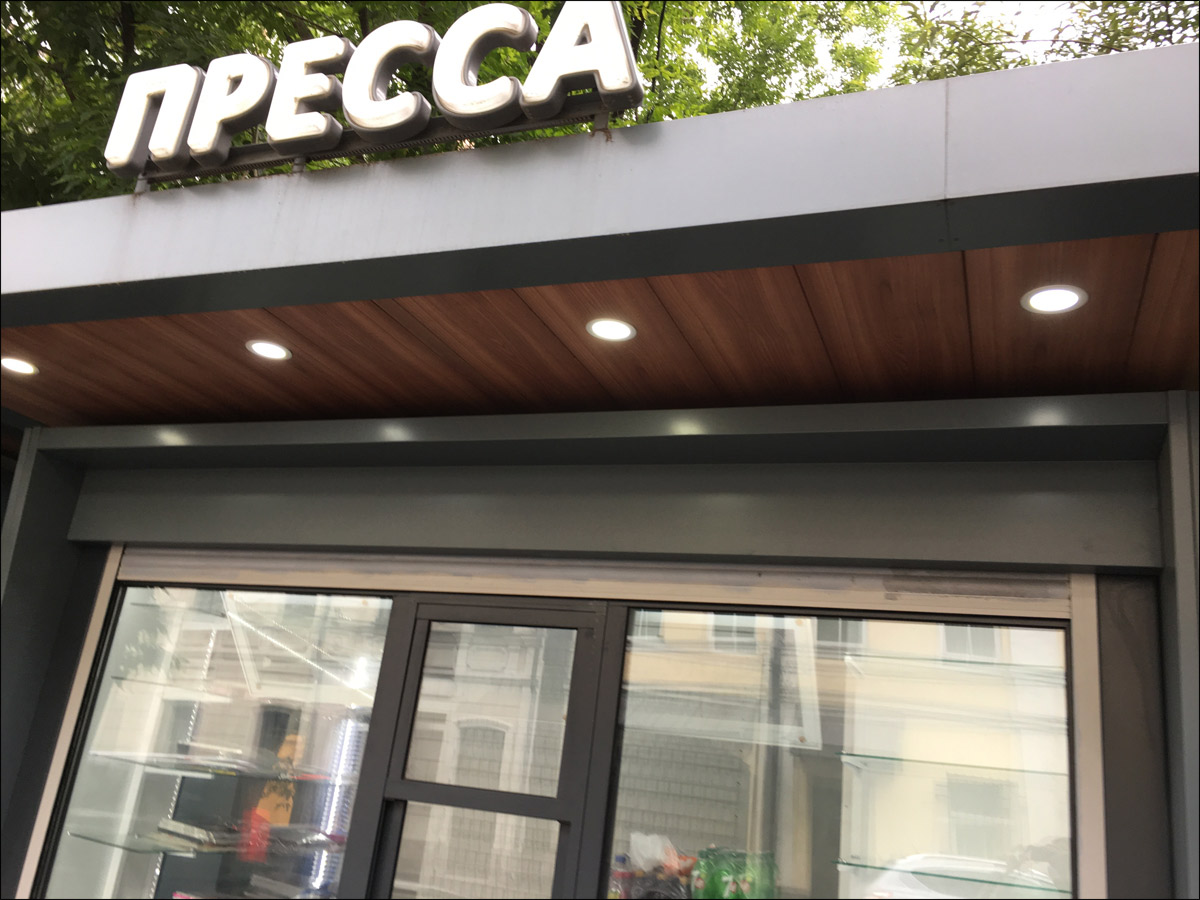
Stalls
The newest kiosk on Belorusskaya, 400 meters from the metro, in a residential area. We decided to fill it with a standard press, plus fill it with what is known in the famous joke as “a wide range of different goods”. Cheap bright things that people need for some reason. An example is the same spinners, pens, stickers. In normal stores, we don’t sell them (or we sell goods of the same type, but with a class higher and not enough) - and here we had to put experience. Practice has shown that someone survives on this.
The first kiosk is Victory Park near the metro. It is open in the middle of summer, we tested several options for stuffing with goods. The main buyers there are tourists. At the same time, damn it, 50% of buyers are Chinese. The Chinese really need toilet paper, napkins, scarves, matches, small dolls. They largely determined the assortment - everything that, with a minimum of press, became their commodity. By the way, it is difficult to determine the share of periodicals in the calculation, there is no methodology - but, apparently, mystery shoppers go around Moscow, because it was on this kiosk that we received the order to stop violating the outrages. Therefore, the methodology is this: received an order - that means there was less than necessary. Reduced the proportion of toilet paper.
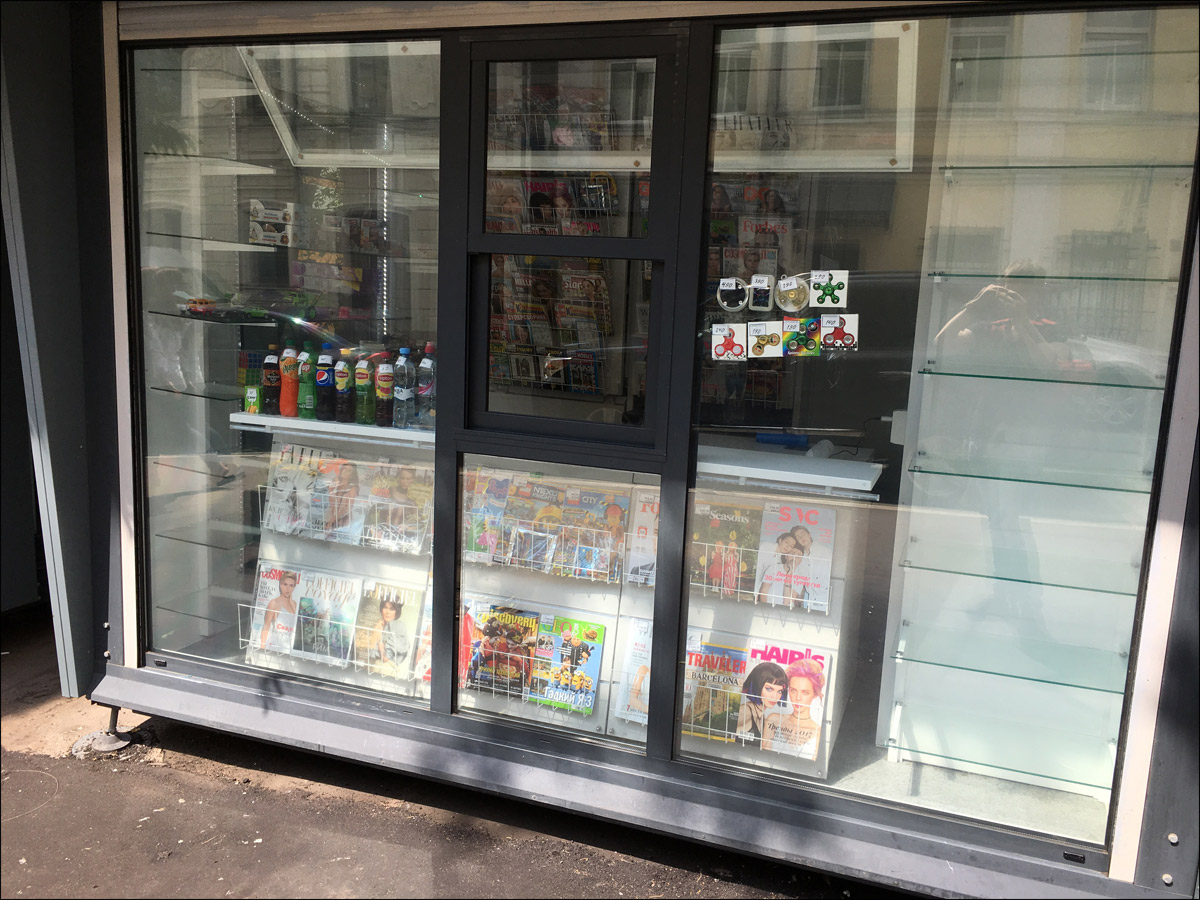
The first hour of work, not all the press has arrived.
The third kiosk on Tsvetnoy is right in the center of the city, a business environment. The business press is concentrated in it, so far we are adjusting to the public. As I remember now, when I wanted to buy the last time the RBC paper magazine, where they wrote about us, I was a little fucked up by the retail price in contrast to the download price of PDF.
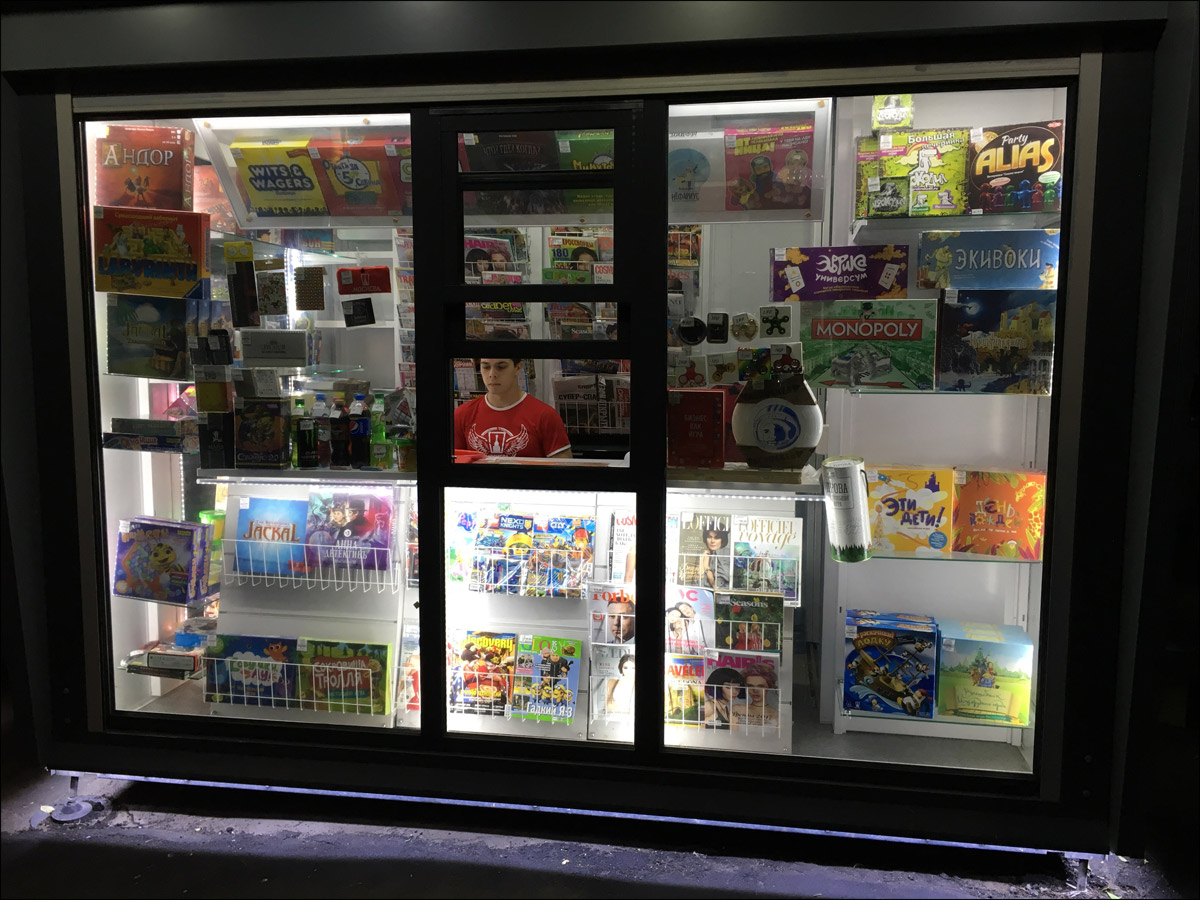
Before entering the competition, our specialist Artyom himself worked at a kiosk with a friend. It was he who took leadership of this project. There he figured out the economy, got the feeling that he could work. They flew past the first tender with a bang because they indicated too low bids. The second time it turned out. Victory Park - opening in early July, Tsvetnoy - in mid-July, Belorusskaya - for several weeks now, almost now.
How board games and stuff were sold
Obviously, these kiosks until the end of the experiment could not be advertised and generally mentioned about them. The reason is simple - if we redistribute our flows to the kiosk, it will simply be taking the client from other stores, and not making a kiosk. The task is for the kiosk to reach the operational payback itself (and there are no capital costs for the financial model, that is, there are no special investments except for the goods). If it comes out, there will already be a conversation.
At first, we were pleasantly surprised by the amount of press bought. A flurry began every Wednesday: a television program came out. Sales are doubled. On weekdays, people bought all sorts of messengers of the gardener, healthy lifestyle, issues of crosswords - in general, everything that the distributor loaded us with is real. Yes, half of the publications in the status of "to lay", mainly magazines. But the rest was taken apart at a wild speed. Sometimes at 7 in the morning there were small lines of senior citizens. Yes, by the way, younger than 40 years old (by sight) - only newspapers with ads, the rest is the lot of the older generation.
In summer, sales of water and cold drinks went very well. The goal is to get 15 thousand revenue per day from a kiosk with ridiculous average checks. She almost managed to achieve it, that is, the operation went on a balance of about zero. As soon as it got colder and the sun went down - the sales of water were cut off, and again we were in the cons. Experienced guys say that the peak of sales is just the winter, but we do not really believe it - it seems that he was connected exactly with the smoke.
We tried category A desktops (the best-selling, that is hits) - more than 30 pieces did not fit into the window. People watched, bought sluggishly (our record - 23 thousand per day), but did not burn with activity. That is, they will recognize the games, but they cannot show and play (this is our hobby), plus there is no habit of buying something big at these kiosks.
Kiosks in other countries
Now I will show how it works in other countries of the world. Here is China, the country of developed communism. They have “stationery and the press”, in fact:

Barcelona, a tourist takeaway:
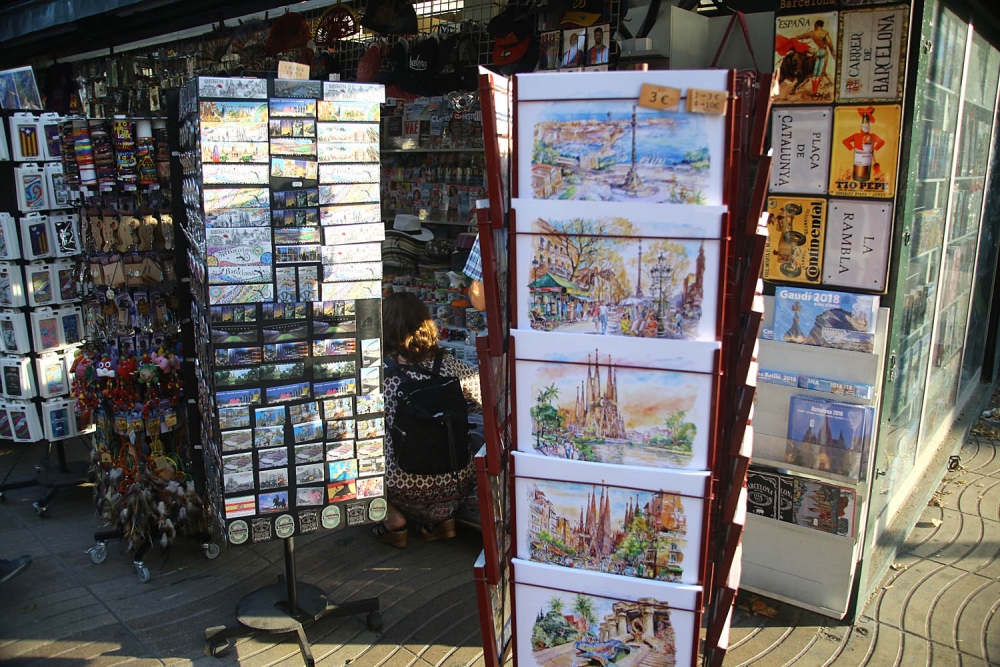
Scotland, the press for sailors on the island:
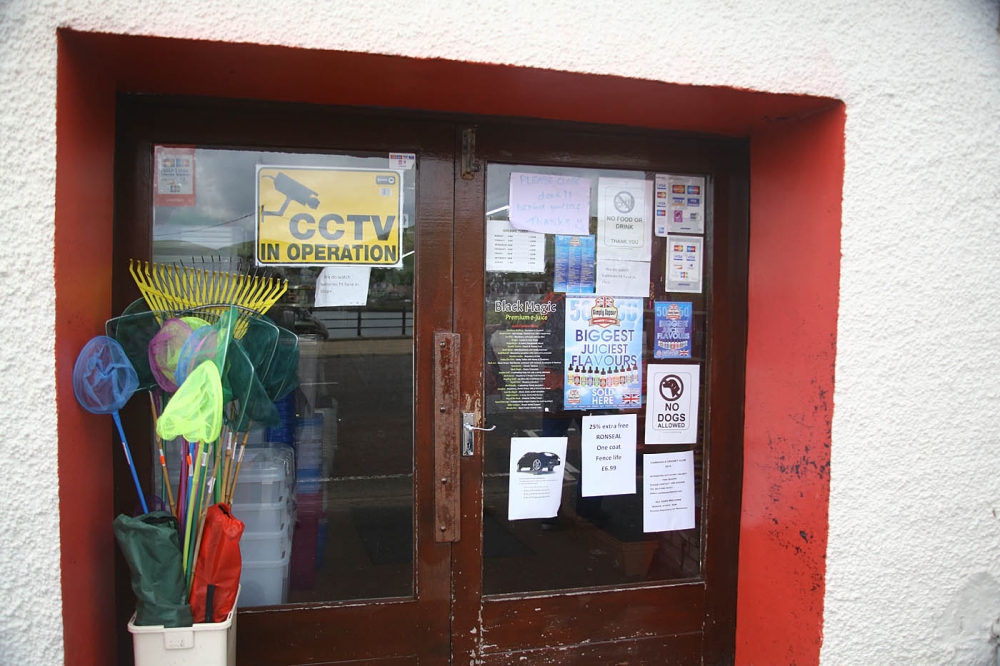
Berlin, very beautiful - but they still have a tradition of paper:
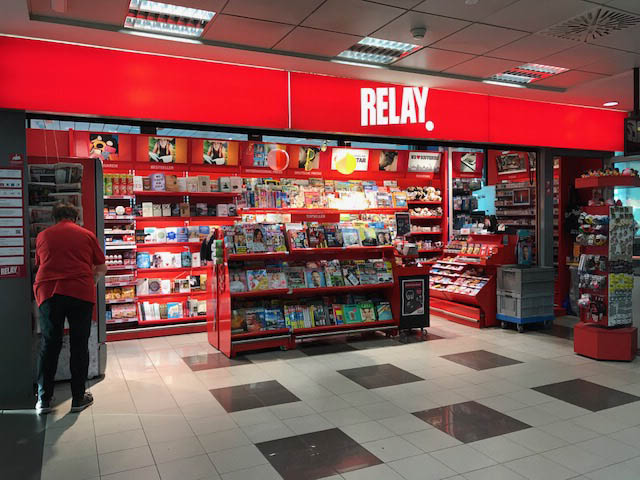
St. Petersburg has some of the coolest stalls in the world - First lane - right at the metro stations.
Also, kiosks are sometimes used as points where there are always first-aid kits - I saw this in China and Australia, but I don’t know if this is a local experience or a systemic phenomenon.
Resume in Moscow
The result - most likely, we look before the first snow. If we don’t reach a stable operating payback, we close the project with fixing losses. There is a scenario of premature termination of a long-term lease agreement on our initiative without violations with payment of compensation. Expensive, but several years of permanent losses are more expensive. Another theory to check is what happens if Mosigra sellers trained under the desk stand in stalls (now the ordinary seller cannot answer questions about the games and does not open them). If this significantly changes revenue, then it will also be possible to continue playing.
We also noticed from the features that more stalls - proportionally more sales. There are kiosks that hardly work at all, for example, one such amazing one stands on Proletarskaya Street. It seems to be at the exit of the subway, but so strangely set between two paths that no one approaches it. Three meters to the side - and he is in the ladies. Who and how it planned is a mystery.
The funniest thing, of course, is how pensioners, almost ready to buy a table, angrily returned it back to the kiosk window and grumbled:
“It's cheaper in Mosigre!”
Prices, of course, were the same. But we did not dare to compete with ourselves.
